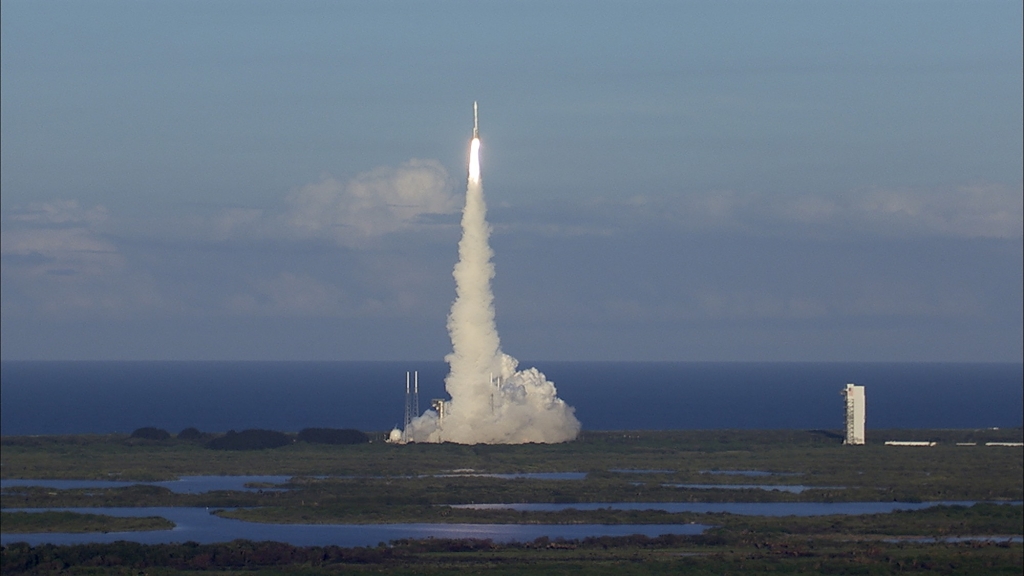-
Tips for becoming a good boxer - November 6, 2020
-
7 expert tips for making your hens night a memorable one - November 6, 2020
-
5 reasons to host your Christmas party on a cruise boat - November 6, 2020
-
What to do when you’re charged with a crime - November 6, 2020
-
Should you get one or multiple dogs? Here’s all you need to know - November 3, 2020
-
A Guide: How to Build Your Very Own Magic Mirror - February 14, 2019
-
Our Top Inspirational Baseball Stars - November 24, 2018
-
Five Tech Tools That Will Help You Turn Your Blog into a Business - November 24, 2018
-
How to Indulge on Vacation without Expanding Your Waist - November 9, 2018
-
5 Strategies for Businesses to Appeal to Today’s Increasingly Mobile-Crazed Customers - November 9, 2018
Rocket carrying NASA asteroid probe blasts off from Florida
The six-meter long OSIRIS-REx lifted off to space late Thursday onboard an Atlas V rocket from Cape Canaveral in the US state of Florida. The boxy spacecraft will go into orbit around the asteroid, seeking out the best spot before going in for a quick bite.
Advertisement
Also to be explored is how Bennu’s orbit is affected by the so-called Yarkovsky effect, the slight push created when the asteroid absorbs sunlight and re-emits that heat as infrared radiation, in the hopes of better understanding the hazards of near-Earth space rocks to Earth.
Osiris-Rex launched atop a United Launch Alliance Atlas V rocket at 8:04 pm last night.
At the end of the second six-minute burn, the deep-space probe separated from the booster as it sped over Australia and headed off into deep space at 25,000 miles per hour (40,000 km/h). NASA has confirmed that the solar arrays have deployed and are now powering the spacecraft.
The National Aeronautics and Space Administration (NASA) successfully launched the Atlas 5 rocket that will carry the satellite, Osiris-Rex (The Origins, Spectral Interpretation, Resource Identification, Security-Regolith Explorer), on its billion dollar seven year, 9 billion mile round-trip voyage to the asteroid Bennu, named after a bird in Egyptian mythology.
OSIRIS-REx is now on its way into a heliocentric orbit.
Rich Kuhns, OSIRIS-REx program manager with Lockheed Martin Space Systems in Denver, described the movement as a “gentle high-five”.
The launch came 50 years to the day that the first “Star Trek” episode aired on TV.
“We were able to deliver OSIRIS-REx on time and under budget to the launch site, and will soon do something that no other NASA spacecraft has done – bring back a sample from an asteroid”. Then it’s smooth sailing for OSIRIS-REx, as it spends the next year traveling around the Sun.
According to NASA, the unmanned craft will arrive at Bennu by August 2018 and the probe will spenda few months taking photos and samples of the asteroid before heading home. “That’s where I see the real possibility”, says Dante Lauretta, Principal Investigator for OSIRIS-REx. In July 2020, it will land on the surface to collect a sample of rock and dust from the asteroid.
The mission is the first time NASA has sent a craft to make contact with an asteroid.
Scientists don’t believe Bennu could seriously harm Earth, although there is a small likelihood it could hit our planet in the 22nd century, making learning about the asteroid even more important for NASA.
Osiris-Rex’s freed sample container – the same kind used for the comet dust retrieval – will parachute down with the asteroid treasure in Utah.
Advertisement
Scientists are aiming to collect about 60 grams of material, but they have the trunk space for as much as 2 kilograms.




























